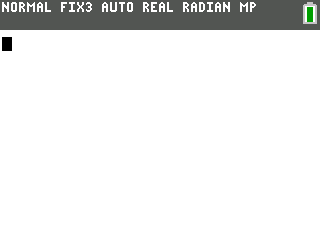- BasicNote CE Progress Thread
- 06 Feb 2018 04:33:24 pm
- Last edited by Michael2_3B on 22 Mar 2021 10:42:41 pm; edited 5 times in total
Download BasicNote CE here:
>>BasicNote CE<<
You've probably heard me talk about this program lately. I've been working on it for who knows how long -- well over a year -- and there is still a lot more to do. While I kind of gave up on the original BasicNote for monochrome, I'm planning on developing BasicNote CE much further.
Some eye candy:


And here's a visually pleasing list of questions and answers:
What is BasicNote CE?
BasicNote CE is an advanced note-taking program, written in pure TI-Basic for the TI-84+ CE. Its purpose is not only to serve as a note-editing and note-saving interface, but also to prove the possibilities of TI-Basic.
What are a few of the cool features?
►Word Wrapping
►Enter Key Functionality (so, paragraph breaks)
►Storage of multiple notes in one string
►Simulation of default TI kerning, which helps with rendering.
►Text Selection, Copying, and Pasting
►Auto-saving
►and more...
When will it be released?
That's hard to tell. I'm currently dealing with the college semester ahead, but I hope to have version 1.0 out by this summer.
What is the current state of the program?
Lots and lots of bugs. I currently need to fix some of the cursor movement, fix character deletion and character insertion, and more.
Despite that, the editing window is already built up quite a bit. I still need to add a menu page to see a list of all the different notes, but that should be fairly easy.
How does this compare to other note-taking programs, like in Assembly or C?
Well... it doesn't. That's just the nature of TI-Basic. While other languages may be faster, I still believe in pushing the limits of TI-Basic, and I hope to make the program as optimized and as fast as possible.
What's the goal of the week?
Fix bugs and clean up code. It's kind of hard to work on something when you've got a messy environment
>>BasicNote CE<<
You've probably heard me talk about this program lately. I've been working on it for who knows how long -- well over a year -- and there is still a lot more to do. While I kind of gave up on the original BasicNote for monochrome, I'm planning on developing BasicNote CE much further.
Some eye candy:


And here's a visually pleasing list of questions and answers:
What is BasicNote CE?
BasicNote CE is an advanced note-taking program, written in pure TI-Basic for the TI-84+ CE. Its purpose is not only to serve as a note-editing and note-saving interface, but also to prove the possibilities of TI-Basic.
What are a few of the cool features?
►Word Wrapping
►Enter Key Functionality (so, paragraph breaks)
►Storage of multiple notes in one string
►Simulation of default TI kerning, which helps with rendering.
►Text Selection, Copying, and Pasting
►Auto-saving
►and more...
When will it be released?
That's hard to tell. I'm currently dealing with the college semester ahead, but I hope to have version 1.0 out by this summer.
What is the current state of the program?
Lots and lots of bugs. I currently need to fix some of the cursor movement, fix character deletion and character insertion, and more.
Despite that, the editing window is already built up quite a bit. I still need to add a menu page to see a list of all the different notes, but that should be fairly easy.
How does this compare to other note-taking programs, like in Assembly or C?
Well... it doesn't. That's just the nature of TI-Basic. While other languages may be faster, I still believe in pushing the limits of TI-Basic, and I hope to make the program as optimized and as fast as possible.
What's the goal of the week?
Fix bugs and clean up code. It's kind of hard to work on something when you've got a messy environment







































